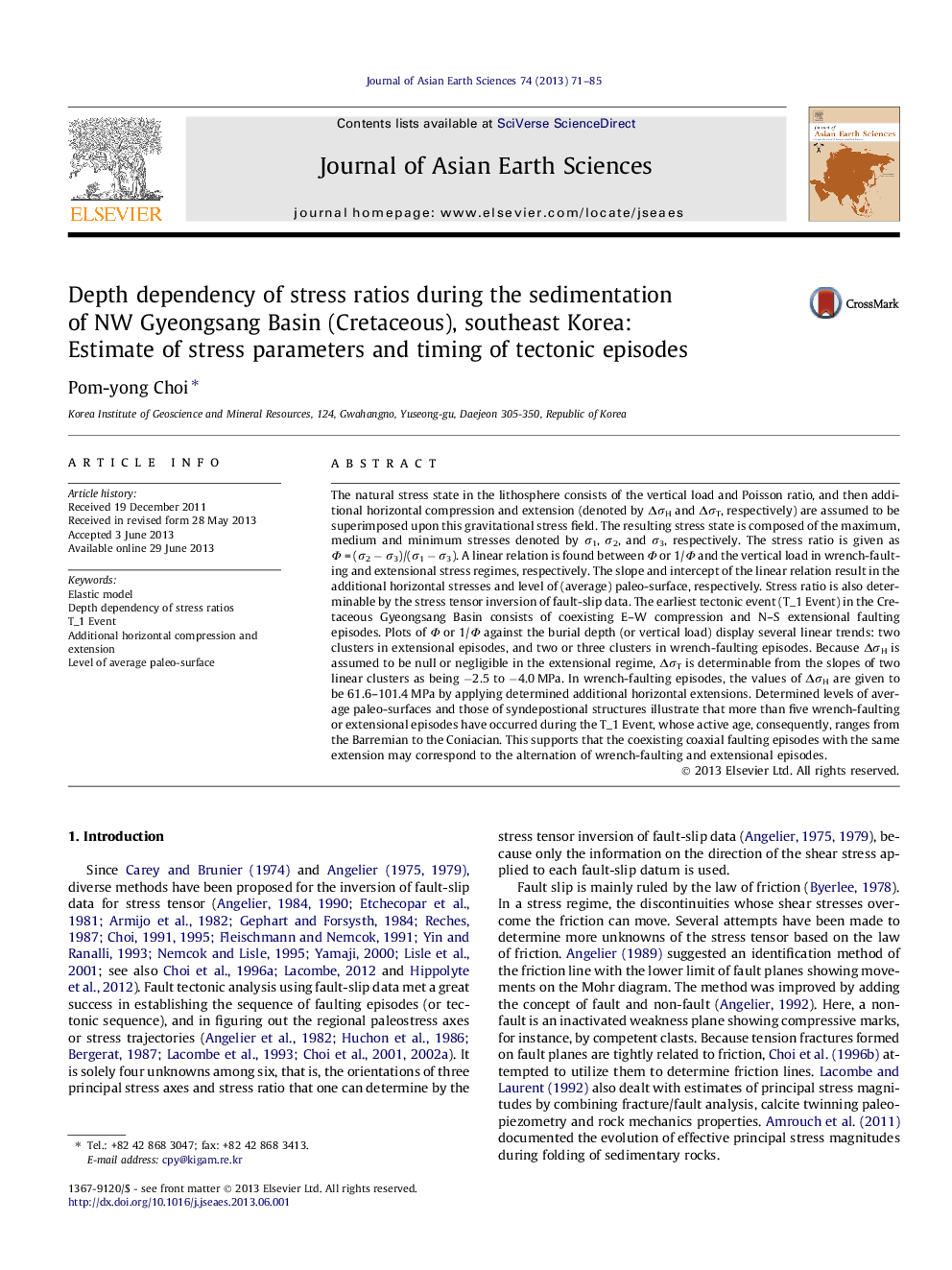| کد مقاله | کد نشریه | سال انتشار | مقاله انگلیسی | نسخه تمام متن |
|---|---|---|---|---|
| 4731053 | 1640393 | 2013 | 15 صفحه PDF | دانلود رایگان |

• The natural stress state in the lithosphere consists of vertical load and Poisson ratio.
• Horizontal compression and extension are assumed to be added to the gravitational stress system.
• Linear relation between stress ratio and burial depth results in the level of paleo-surface.
• Real stress state during a tectonic episode can be reconstructed using determined parameters.
• More than five wrench-faulting or extensional episodes have occurred during the T_1 Event.
The natural stress state in the lithosphere consists of the vertical load and Poisson ratio, and then additional horizontal compression and extension (denoted by ΔσH and ΔσT, respectively) are assumed to be superimposed upon this gravitational stress field. The resulting stress state is composed of the maximum, medium and minimum stresses denoted by σ1, σ2, and σ3, respectively. The stress ratio is given as Φ = (σ2 − σ3)/(σ1 − σ3). A linear relation is found between Φ or 1/Φ and the vertical load in wrench-faulting and extensional stress regimes, respectively. The slope and intercept of the linear relation result in the additional horizontal stresses and level of (average) paleo-surface, respectively. Stress ratio is also determinable by the stress tensor inversion of fault-slip data. The earliest tectonic event (T_1 Event) in the Cretaceous Gyeongsang Basin consists of coexisting E–W compression and N–S extensional faulting episodes. Plots of Φ or 1/Φ against the burial depth (or vertical load) display several linear trends: two clusters in extensional episodes, and two or three clusters in wrench-faulting episodes. Because ΔσH is assumed to be null or negligible in the extensional regime, ΔσT is determinable from the slopes of two linear clusters as being −2.5 to −4.0 MPa. In wrench-faulting episodes, the values of ΔσH are given to be 61.6–101.4 MPa by applying determined additional horizontal extensions. Determined levels of average paleo-surfaces and those of syndepostional structures illustrate that more than five wrench-faulting or extensional episodes have occurred during the T_1 Event, whose active age, consequently, ranges from the Barremian to the Coniacian. This supports that the coexisting coaxial faulting episodes with the same extension may correspond to the alternation of wrench-faulting and extensional episodes.
Figure optionsDownload as PowerPoint slide
Journal: Journal of Asian Earth Sciences - Volume 74, 25 September 2013, Pages 71–85